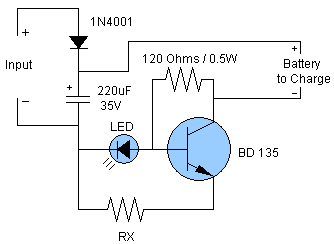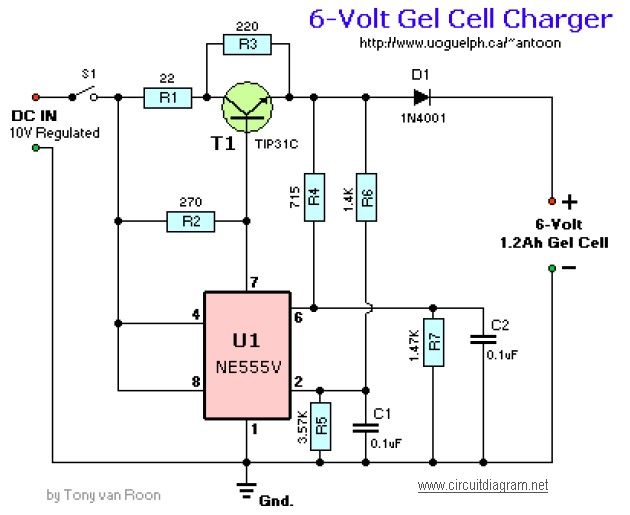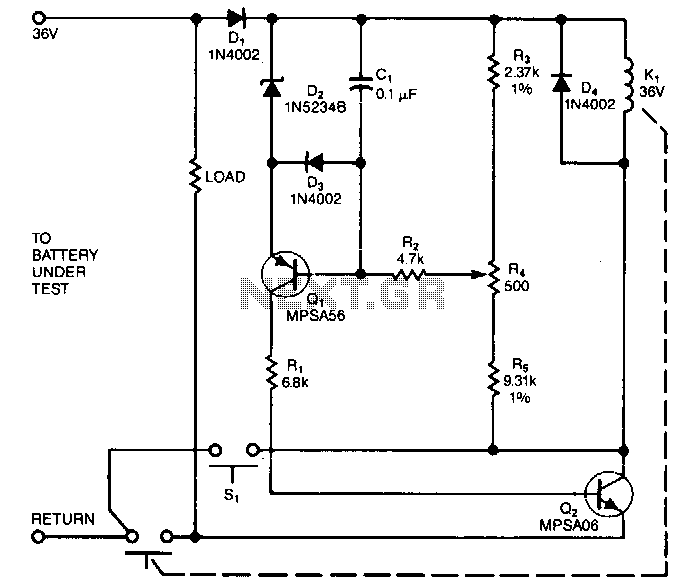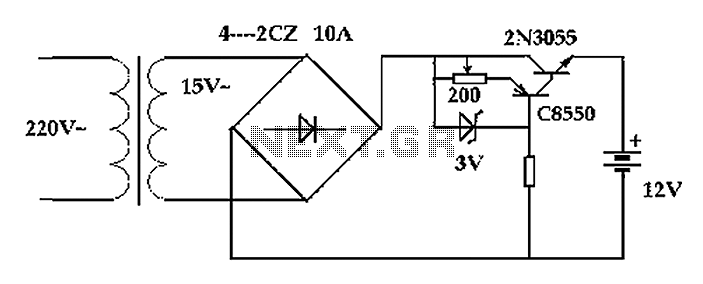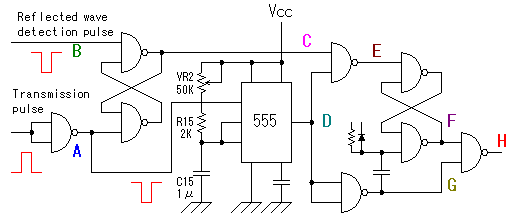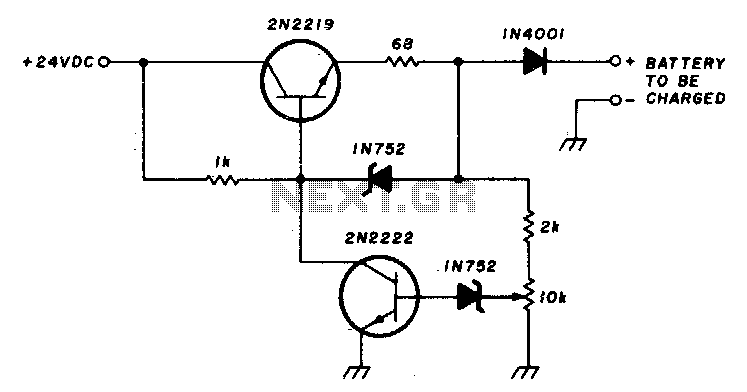
Battery Powered Burglar Alarm
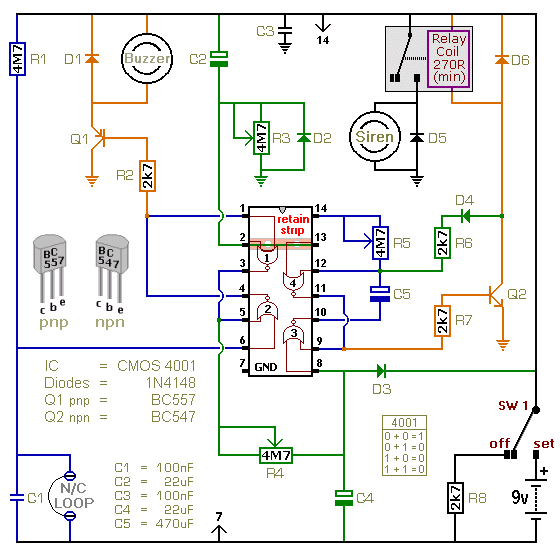
This is a single-zone alarm system featuring independently adjustable Exit, Entry, and Siren Cut-Off timers. It is designed to accommodate standard normally-closed input devices, such as magnetic reed contacts, foil tape, and passive infrared sensors (PIRs). The system can be powered by a mains supply, but its extremely low standby current makes battery operation a feasible option. A 9-volt supply is illustrated in the schematic, although the circuit operates effectively with voltages ranging from 5 to 15 volts. Users must select a siren, buzzer, and relay appropriate for the chosen voltage. The alarm system is user-friendly; the switch (Sw1) can be any type of two-way switch. If the buzzer sounds upon arming the alarm, it indicates that the normally-closed loop is open. If the buzzer remains silent, the loop is intact. Depending on the setting of resistor R3, the user has up to approximately one minute to exit the building, during which the buzzer will sound. Once the door is closed, the buzzer should cease, confirming that the loop has been restored within the allowed time. Upon re-entry and opening the door, the buzzer will sound again. The user has up to about one minute, based on the setting of resistor R4, to deactivate the alarm before the siren activates. The siren will sound for a duration of up to approximately 20 minutes, depending on the setting of resistor R5, after which it will turn off and remain silent. The alarm can be silenced at any time by switching Sw1 to the "off" position. Precise timing is not critical for this device; fixed resistors can be used in place of potentiometers. For instance, 2.2M ohm resistors would provide exit and entry delays of about 30 seconds and a siren cut-off time of about 10 minutes. After the siren cut-off timer has deactivated the siren, the buzzer will continue to sound, alerting the user that the alarm has been triggered upon return. Support materials for this alarm include a photograph of the prototype, a parts list, a detailed circuit description, a step-by-step construction guide, and additional resources.
The single-zone alarm system operates based on a straightforward yet effective circuit design that utilizes a combination of resistors, capacitors, and a relay to manage the timing functions and control the output devices. The adjustable timers allow customization of the Exit, Entry, and Siren Cut-Off durations, providing flexibility based on user preferences and security needs.
The normally-closed input devices are connected to the circuit in such a way that any interruption in the loop will trigger the buzzer, alerting the user to potential security breaches. The choice of using a two-way switch (Sw1) simplifies the operation of the alarm, enabling easy arming and disarming.
The circuit's power supply section must be chosen carefully to ensure compatibility with the selected output devices. The relay serves as a critical component, allowing the system to control higher power outputs like sirens or buzzers without directly impacting the sensitive control circuitry.
The timers are implemented using resistors (R3, R4, R5) and capacitors, which define the delay periods. Users can experiment with different resistor values to achieve desired timing characteristics, making the system adaptable to various environments. For instance, using a higher resistance value will increase the delay time, while a lower value will shorten it.
The alarm's design also includes a feedback mechanism through the buzzer, which not only indicates the status of the system when arming or disarming but also serves as an alert if the alarm has been triggered during the user's absence. This feature enhances the overall security provided by the system.
In summary, the single-zone alarm system is a versatile and efficient solution for basic security needs, with adjustable settings and user-friendly operation, making it suitable for various applications in residential or light commercial environments. The accompanying documentation and prototype materials provide comprehensive guidance for assembly and troubleshooting, ensuring successful implementation of the alarm system.This is a single zone alarm - with independently adjustable Exit, Entry and Siren Cut-Off timers. It will accommodate the usual types of normally-closed input devices - such as magnetic-reed contacts, foil tape and PIRs. If you wish - you can use a mains power supply. But the extremely low standby current makes battery power a realistic option. I` ve used a 9-volt supply in the drawing - but the circuit will work at anything from 5 to 15-volts. All you need do is select a Siren, Buzzer, and Relay to suit the voltage you`re using. The alarm is easy to operate. Sw1 can be any type of two-way switch. If the Buzzer sounds when you switch the alarm on - the normally-closed loop is open. Switch off again - and check the building for open doors or windows. If the Buzzer does not sound - the loop is intact. Depending on the setting of R3 - you have up to about a minute to leave the building. As you do so - the Buzzer will sound. When you close the door behind you - it should stop sounding. This confirms that the loop has been restored within the time allowed. When you return and open the door - the Buzzer will sound. Depending on the setting of R4 - you have up to about a minute to switch the alarm off. If you fail to do so - the Siren will sound. Depending on the setting of R5 - the Siren will sound for up to about 20-minutes. Then it will switch off - and remain off. Of course - you can stop the noise at any time by moving Sw1 to the "off" position. For this type of device - really precise times are not necessary. If you like - you can replace the pots with fixed resistors. For example - 2M2 resistors should give you exit and entry delays of about 30-seconds - and a Siren cut-off time of about 10-minutes. After the cut-off timer has switched the Siren off - the Buzzer will continue to sound. So when you return - if the Buzzer is sounding - you`ll know that the alarm has been activated. The Support Material for this alarm includes a photograph of the prototype - a parts list - a detailed circuit description - a step-by-step guide to construction - and more.
🔗 External reference
The single-zone alarm system operates based on a straightforward yet effective circuit design that utilizes a combination of resistors, capacitors, and a relay to manage the timing functions and control the output devices. The adjustable timers allow customization of the Exit, Entry, and Siren Cut-Off durations, providing flexibility based on user preferences and security needs.
The normally-closed input devices are connected to the circuit in such a way that any interruption in the loop will trigger the buzzer, alerting the user to potential security breaches. The choice of using a two-way switch (Sw1) simplifies the operation of the alarm, enabling easy arming and disarming.
The circuit's power supply section must be chosen carefully to ensure compatibility with the selected output devices. The relay serves as a critical component, allowing the system to control higher power outputs like sirens or buzzers without directly impacting the sensitive control circuitry.
The timers are implemented using resistors (R3, R4, R5) and capacitors, which define the delay periods. Users can experiment with different resistor values to achieve desired timing characteristics, making the system adaptable to various environments. For instance, using a higher resistance value will increase the delay time, while a lower value will shorten it.
The alarm's design also includes a feedback mechanism through the buzzer, which not only indicates the status of the system when arming or disarming but also serves as an alert if the alarm has been triggered during the user's absence. This feature enhances the overall security provided by the system.
In summary, the single-zone alarm system is a versatile and efficient solution for basic security needs, with adjustable settings and user-friendly operation, making it suitable for various applications in residential or light commercial environments. The accompanying documentation and prototype materials provide comprehensive guidance for assembly and troubleshooting, ensuring successful implementation of the alarm system.This is a single zone alarm - with independently adjustable Exit, Entry and Siren Cut-Off timers. It will accommodate the usual types of normally-closed input devices - such as magnetic-reed contacts, foil tape and PIRs. If you wish - you can use a mains power supply. But the extremely low standby current makes battery power a realistic option. I` ve used a 9-volt supply in the drawing - but the circuit will work at anything from 5 to 15-volts. All you need do is select a Siren, Buzzer, and Relay to suit the voltage you`re using. The alarm is easy to operate. Sw1 can be any type of two-way switch. If the Buzzer sounds when you switch the alarm on - the normally-closed loop is open. Switch off again - and check the building for open doors or windows. If the Buzzer does not sound - the loop is intact. Depending on the setting of R3 - you have up to about a minute to leave the building. As you do so - the Buzzer will sound. When you close the door behind you - it should stop sounding. This confirms that the loop has been restored within the time allowed. When you return and open the door - the Buzzer will sound. Depending on the setting of R4 - you have up to about a minute to switch the alarm off. If you fail to do so - the Siren will sound. Depending on the setting of R5 - the Siren will sound for up to about 20-minutes. Then it will switch off - and remain off. Of course - you can stop the noise at any time by moving Sw1 to the "off" position. For this type of device - really precise times are not necessary. If you like - you can replace the pots with fixed resistors. For example - 2M2 resistors should give you exit and entry delays of about 30-seconds - and a Siren cut-off time of about 10-minutes. After the cut-off timer has switched the Siren off - the Buzzer will continue to sound. So when you return - if the Buzzer is sounding - you`ll know that the alarm has been activated. The Support Material for this alarm includes a photograph of the prototype - a parts list - a detailed circuit description - a step-by-step guide to construction - and more.
🔗 External reference
Warning: include(partials/cookie-banner.php): Failed to open stream: Permission denied in /var/www/html/nextgr/view-circuit.php on line 713
Warning: include(): Failed opening 'partials/cookie-banner.php' for inclusion (include_path='.:/usr/share/php') in /var/www/html/nextgr/view-circuit.php on line 713
